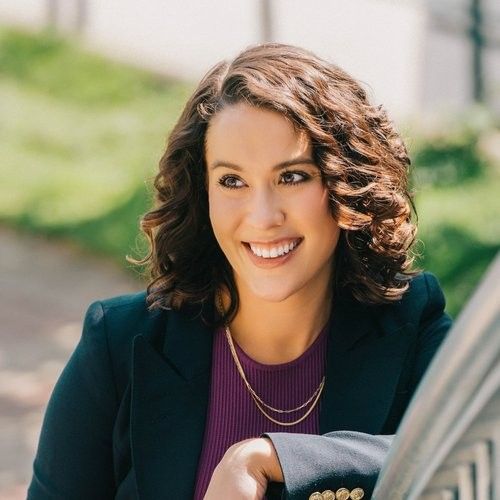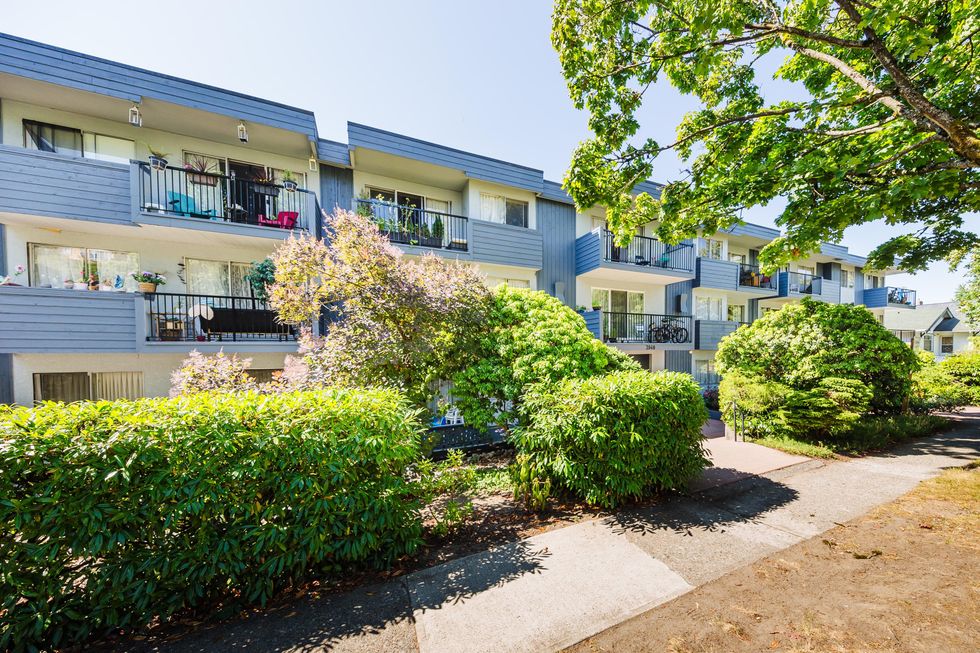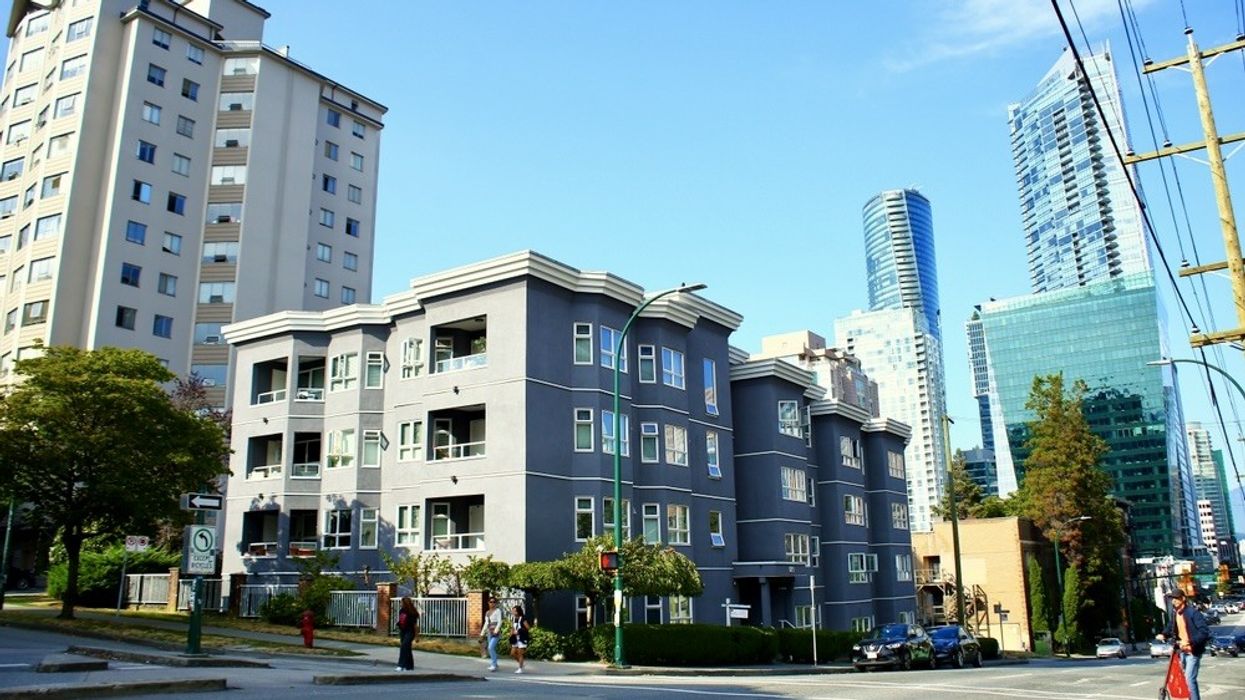British Columbia’s Rental Protection Fund has kicked into high gear since it was announced by Premier David Eby more than a year ago. The $500 million fund helps non-profit housing providers purchase and maintain older housing stock to protect renters from skyrocketing rents and displacement. As a result, the fund is responsible for more than half of all multi-family purchases in the province so far this year, according to the RPF, with 33 acquisitions and 21 of them announced.
“That makes the community housing sector now the single largest buyer in that market, which [is] in contrast to years past, when the single largest buyers were much larger private and institutional buyers,” says Katie Maslechko, CEO of the Rental Protection Fund, which operates as a non-profit society, independent from government. “That's a dramatic shift.”
The RPF recently announced the purchase of two apartment buildings in Victoria, at 1500 Chambers St. and 430 Michigan St., totalling 68 units that received $11.3 million, or around $168,000 per unit. The owner-operator, Greater Victoria Housing Society, also received a $1.2 million renewal grant for renovations. Other key purchases have been older apartment buildings in Langley, Burnaby, North Vancouver, Port Hardy, Campbell River, Vernon, and Coquitlam. These are sites that aren’t necessarily attractive to developers because they’re not in urban centres, or near up-zoned transit hubs, such as Vancouver’s Broadway Plan area, says Maslechko. They’re also existing low-rent buildings, with rents on average 44% lower than the surrounding market rates.
“It's a great time to be able to be in the market as the community housing sector, and avoiding those instances where there is unnecessary competition,” says Maslechko. “But often, you know, the developers and the community housing sector are looking for different properties. In many cases... we're not ever necessarily buying the property at the intersection of Broadway and Fraser... We are more often purchasing the property that is down the street and around the corner.”

In the last year, the RPF has doubled its staff to a team of eight and is growing, she says. The goal of the fund is to acquire 2,000 units of housing over a three-year span. Eighteen months in, they have secured 1,500 units and have spent about half the $500 million, says Maslechko. She hopes that more funding will follow so that the program can eventually become self-sufficient. She also hopes that with the federal government’s announcement of its own copycat version of the fund in April, the provincial fund and the federal fund will work in sync to help finance non-profit groups and others who are in the business of providing community housing.
“We're working on designing this right now, to have a self-sustaining fund that would be able to secure 1,000 or more units a year, year over year, for a long time to come,” says Maslechko, who previously worked for developer Beedie, as director of development.
“With these two programs coming together we're quite excited about that prospect and do hope to see that all... those federal dollars start to flow as soon as possible, and then illustrating what a recapitalisation from the province might need to be in order to have this thing operate in perpetuity, which is thought to be the goal.”
Some of the acquisitions have not yet been announced. But purchases that have include those by non-profit group Connective, which used the fund to acquire nine properties in Campbell River and Port Hardy, ensuring affordability for 334 existing rental homes. Through the fund, the group accessed $12.3 million in funding for the five Campbell River properties, which will continue to rent at 46% below market rate. Although the fund does not provide financing, it’s common for groups to apply for financing through the Canada Mortgage and Housing Corporation’s MLI Select financing program, said Maslechko. Because the rents are low at the properties, the fund provides that “equity gap” so that buyers can obtain their financing through private sector lenders, she explained.
Properties acquired through the BC fund are eligible for capital expenditure grants to fix up the buildings, but they must not rely on ongoing subsidies to maintain operations. It’s expected the buildings will grow equity for the owners and enable them to leverage that equity for the purchase of more affordable housing.

The application process involves three steps, which include vetting the applicant’s ability to follow through, vetting the property’s suitability, and a comprehensive proposal and strategy to maintain the property for the 20-year mandate. A covenant on title ensures the building stays rental.
Commercial broker Mark Goodman cited $268.8 million spent on 14 transactions involving nonprofit and government-funded buyers this year. He calls it an “unprecedented” shift in buying for the nonprofit sector, particularly within suburban markets. Last year, there were only two transactions by non-profit or government-funded buyers and four in 2022.
Goodman has clients who’ve sold properties that were purchased through the Rental Protection Fund program. Those include a 41-unit building at 3940 Pender St. in Burnaby, which sold for $11.950 million. Anybody selling in the currently sluggish market is pretty happy to find a government-funded buyer, he says.
“We have concluded one deal with a nonprofit who used the Rental Protection Fund to help finance a deal, and we have had numerous calls and showings that say we have level one commitment from the RPF,” he says. “Typically, the nonprofit will work with the RPF to target certain buildings, once they meet a certain threshold [of criteria].”
But he has also been publicly critical of the program, which, he says, is an ineffective use of taxpayer money. He believes that large landlords and institutional investors are better positioned to more effectively deliver rental units in greater numbers that make more financial sense, considering high land prices. As well, he says the province’s transit-oriented area density policy conflicts with the rental fund. The TOA policy is trying to add density while the fund is achieving the opposite, he says. He gives the example of the $71 million spent toward the purchase of a pair of housing co-operatives in Coquitlam’s City Centre neighbourhood. The 290 units at 2860 and 2865 Packard Avenue are on a low-density 6.5-acre site near a SkyTrain station and across from a large shopping mall, with a nine-acre parking lot nearby. Goodman estimates that the site could handle an additional 770 new units, based on an average size of 750 sq ft.
“The fund is helping get properties into the hands of non-profits, and many will argue that is a great result,” says Goodman. “We have worked with many non-profits and value the services they provide. We have donated our own money and time to ensure they are able to continue serving the community. But this program does nothing for affordability in the province,” he says. “There is no new housing being created. We are simply removing rental units out of the general housing stock and putting them into the below-market segment of the market. For the 1,500 or so residents lucky enough to be in those buildings, it will no doubt be helpful. But there are over 200,000 units in the primary rental market in BC and keeping rents low for 1,500 units will do nothing for the rest of the renters in the province.
“It’s a drop in the bucket and may actually drive rents higher in the rest of the market because there are now 1,500 fewer units available to the general population. If the goal is really to help renters, there are much more effective ways to spend $500 million in taxpayer funds.”





















